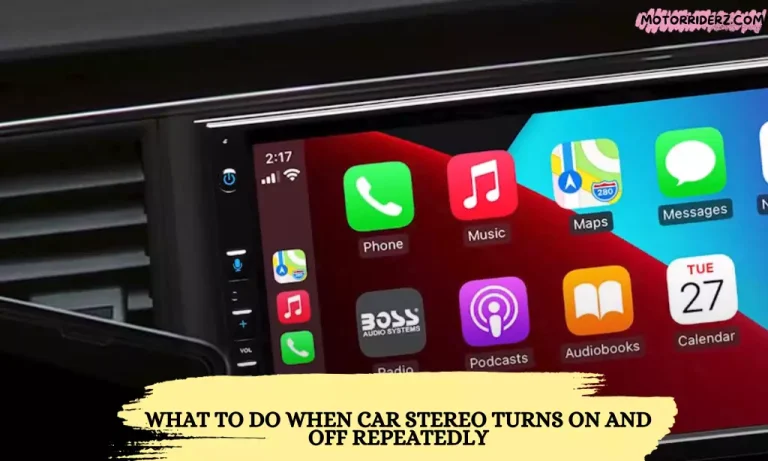What Are The Symptoms Of A Bad Solenoid Pack E4od?
Automobiles have become an integral part of our daily lives, offering convenience, mobility, and freedom. Within the intricate network of components that make up a vehicle, the transmission system stands as one of the most critical.
Among the various transmission systems available, the E4OD (Electronic 4-Speed Overdrive) has gained popularity for its efficiency and reliability.
However, even the most robust of systems can experience malfunctions over time, and the solenoid pack within an E4OD transmission is no exception.
The solenoid pack, a vital component responsible for controlling the transmission’s hydraulic functions, can occasionally exhibit signs of wear and tear, leading to a host of performance issues.
In this article, we will delve into the world of automotive transmissions, specifically focusing on the E4OD system, and explore the symptoms that may indicate a faulty solenoid pack.
Understanding these symptoms will not only empower vehicle owners to identify potential problems early but also enable them to seek timely repairs, thus prolonging the life of their beloved automobiles.
So, fasten your seatbelts as we embark on a journey to unravel the perplexing signs of a bad solenoid pack in an E4OD transmission.
Signs Of A Bad Solenoid Pack E4od?
The solenoid pack in an E4OD transmission plays a crucial role in ensuring smooth and efficient gear shifting. When this component begins to deteriorate or malfunction, it can manifest in various symptoms that indicate a potential issue.
Recognizing these signs early on can save you from costly repairs and prevent further damage to your vehicle. Here are some common indicators of a bad solenoid pack in an E4OD transmission:
1. Erratic Shifting
One of the most noticeable signs is erratic or inconsistent shifting. You may experience abrupt or delayed shifts, or the transmission may struggle to find the right gear. This can result in jerky movements or a noticeable hesitation when accelerating.
2. Gear Slippage
A faulty solenoid pack can cause gear slippage, where the transmission unexpectedly slips out of gear while driving. You may feel a loss of power or notice the engine revving without a corresponding increase in speed.
3. Harsh Engagements
If you notice that your E4OD transmission engages with a harsh or sudden jolt when shifting gears, it could be a sign of a failing solenoid pack. This rough engagement can be felt especially during initial startup or when shifting from park to drive.
4. Overheating Transmission
A malfunctioning solenoid pack can lead to increased friction and heat buildup within the transmission. If you observe the transmission temperature gauge rising higher than usual or notice a burning smell, it could indicate a problem with the solenoid pack.
5. Diagnostic Trouble Codes (DTCs)
Modern vehicles are equipped with onboard diagnostic systems that can detect and store error codes related to various components, including the transmission. If the solenoid pack is faulty, it may trigger specific DTCs related to transmission solenoid performance.
What Are The Symptoms Of A Bad E4od Solenoid Pack?
A malfunctioning or bad solenoid pack in an E4OD transmission can exhibit several symptoms that indicate a potential issue. Recognizing these signs early on can help you take appropriate action and prevent further damage to your vehicle. Here are some common symptoms of a bad E4OD solenoid pack:
1. Erratic Shifting
One of the most noticeable signs is erratic shifting behavior. You may experience delayed or harsh shifts, where the transmission hesitates before engaging the next gear or shifts abruptly. In some cases, the transmission may even get stuck in a particular gear, unable to shift up or down smoothly.
2. Gear Slippage
A failing solenoid pack can cause gear slippage, where the transmission slips out of gear unexpectedly while driving. This can result in a sudden loss of power, a noticeable increase in engine RPM without a corresponding increase in speed, or a feeling of the transmission slipping or struggling to maintain the selected gear.
3. Transmission Overheating
A bad solenoid pack can lead to increased friction and heat buildup within the transmission. As a result, you may observe the transmission temperature gauge rising higher than normal or notice a burning smell coming from the transmission area. Transmission overheating can lead to severe damage if not addressed promptly.
4. Harsh Engagements or Engagement Issues
A faulty solenoid pack can cause harsh and abrupt engagements when shifting gears, especially during initial startup or when shifting from park to drive. You may feel a jolt or jerk as the transmission engages the selected gear.
Additionally, the transmission may have difficulty engaging in any gear, resulting in difficulty starting the vehicle or getting it to move.
5. Illuminated Check Engine Light
In some cases, a bad solenoid pack can trigger the check engine light on your vehicle’s dashboard. This occurs when the vehicle’s onboard diagnostic system detects an issue with the transmission and stores a related trouble code.
What To Do When You Detect A Bad E40d Solenoid Pack?
If you detect a bad E4OD solenoid pack in your vehicle, it’s important to take appropriate action to address the issue promptly. Here are the steps you can follow when you suspect a faulty solenoid pack:
1. Confirm the Symptoms
Ensure that the symptoms you are experiencing are indeed indicative of a bad solenoid pack. Refer to the common symptoms mentioned earlier and compare them with the issues you are facing. However, keep in mind that these symptoms can also be caused by other transmission problems, so it’s best to consult with a professional mechanic for an accurate diagnosis.
2. Consult a Qualified Mechanic
It is highly recommended to seek the expertise of a qualified mechanic or a transmission specialist who has experience with E4OD transmissions. They will have the knowledge and diagnostic tools to accurately assess the condition of your solenoid pack and determine the necessary repairs or replacements.
3. Diagnostic Testing
The mechanic will perform diagnostic testing, which may include scanning the vehicle’s onboard computer for trouble codes related to the transmission. This will provide valuable information about the specific issue with the solenoid pack and other potential problems within the transmission.
4. Repair or Replacement
Based on the diagnostic results, the mechanic will recommend the appropriate course of action. In some cases, the solenoid pack may be repairable by replacing individual faulty solenoids. However, if the solenoid pack is severely damaged or worn out, it may need to be replaced entirely. The mechanic will use genuine or high-quality aftermarket solenoid packs to ensure reliability.
5. Regular Maintenance
After the solenoid pack is repaired or replaced, it’s crucial to follow a regular maintenance schedule for your transmission. Regular fluid changes, filter replacements, and overall transmission inspections can help prevent future issues and extend the lifespan of the transmission system.
6. Test Drive and Monitoring
Once the repairs or replacements are done, the mechanic will conduct a test drive to ensure that the solenoid pack is functioning properly. They will also monitor the transmission’s performance to ensure that the previous symptoms have been resolved.
Is Replacing A Bad E4od Solenoid Pack Typically Expensive?
The cost of replacing a bad E4OD solenoid pack can vary depending on several factors, including the specific vehicle, the extent of the damage or wear, and the labor rates in your area. Here are some factors to consider regarding the cost of replacing a bad E4OD solenoid pack:
1. Replacement Parts
The cost of the solenoid pack itself will depend on whether you opt for genuine OEM (Original Equipment Manufacturer) parts or aftermarket alternatives. OEM parts are typically more expensive, but they are designed to meet the manufacturer’s specifications and offer a higher level of reliability. Aftermarket parts can be more affordable, but the quality may vary.
2. Labor Costs
The labor charges will depend on the complexity of the job and the hourly rates of the repair shop or mechanic. Replacing the solenoid pack usually involves accessing and removing various components of the transmission, which can be time-consuming and require expertise.
3. Additional Repairs
In some cases, a bad solenoid pack may have caused damage to other transmission components. If this is the case, additional repairs or replacements may be necessary, which can add to the overall cost.
4. Warranty Coverage
If your vehicle is still under warranty, some or all of the replacement costs may be covered, depending on the terms of the warranty. It’s worth checking with the dealership or warranty provider to understand the coverage and potential reimbursement options.
While replacing a bad E4OD solenoid pack may involve some expense, addressing the issue promptly can help prevent further damage to the transmission, potentially saving you from more extensive and costly repairs down the line.
Keep in mind that regular maintenance and servicing of the transmission can help prevent solenoid pack issues and prolong the overall lifespan of the transmission system.
What was the solution to the issue experienced by another user who had the same problem?
Another user, seventhree, expressed their gratitude for finding and fixing the issue they were facing. They confirmed that the solution provided worked exceptionally well, indicating that the problem was successfully resolved.
What other input can be provided for a similar issue with the e4od transmission?
Here is an alternative response that provides additional input for a similar issue with the e4od transmission:
“seventhree responded: I encountered a similar problem in the past, and I was able to resolve it by checking the transmission fluid level and condition. It’s always a good idea to make sure the fluid is at the appropriate level and not deteriorated or contaminated. Additionally, you may want to inspect the wiring connections and sensors associated with the transmission to ensure they are properly connected and functioning correctly. It could also be beneficial to perform a diagnostic scan using a reliable OBD-II scanner to identify any error codes related to the transmission. If none of these steps help to resolve the issue, you might consider consulting a professional mechanic or visiting a specialized transmission shop for further assistance.”
What was the solution to the problem experienced by the discussion starter?
According to the user with the username “seventhree”, in a forum discussion, they were able to successfully locate the solution to their problem, fix it, and now it is working wonderfully. They expressed their gratitude to everyone who assisted them in resolving the issue.
How Often Should You Inspect Or Service The E4od Solenoid Pack?
The frequency of inspecting or servicing the E4OD solenoid pack can vary depending on several factors, including the manufacturer’s recommendations, the vehicle’s usage, and the overall condition of the transmission. Here are some general guidelines to consider:
1. Manufacturer’s Recommendations
The first and foremost source of information regarding service intervals for the solenoid pack is the vehicle’s manufacturer. The manufacturer’s maintenance schedule, outlined in the owner’s manual or maintenance guide, will provide specific recommendations for inspecting and servicing the transmission components, including the solenoid pack. It’s important to follow these guidelines for optimal performance and longevity.
2. Normal Maintenance Schedule
As a general guideline, it is advisable to have a comprehensive transmission inspection, including the solenoid pack, performed every 30,000 to 60,000 miles (or every 2 to 4 years). This interval allows for the identification of any potential issues or wear before they escalate into major problems.
3. Severe Driving Conditions
If your vehicle is subjected to severe driving conditions, such as frequent towing, hauling heavy loads, or driving in extreme temperatures, the solenoid pack may require more frequent inspections and servicing. These demanding conditions can put additional strain on the transmission system, including the solenoid pack, necessitating more frequent attention.
4. Fluid Changes
Regular fluid changes are vital for maintaining the health of the transmission, including the solenoid pack. The frequency of fluid changes can vary, but a common recommendation is every 30,000 to 60,000 miles (or every 2 to 4 years). Fresh transmission fluid helps ensure proper lubrication and cooling of the solenoid pack and other transmission components.
5. Pay Attention to Symptoms
Even if you follow the recommended service intervals, it’s important to pay attention to any symptoms or warning signs of a potential issue with the solenoid pack. If you experience erratic shifting, gear slippage, or other transmission-related problems, have your vehicle inspected by a qualified mechanic promptly, regardless of the service schedule.
Frequently Asked Questions
Q: Can other transmission problems exhibit similar symptoms to a bad solenoid pack?
A: Yes, some symptoms associated with a bad solenoid pack can also be caused by other transmission issues. Therefore, it’s crucial to have a qualified mechanic or transmission specialist diagnose the problem accurately. They can perform diagnostic testing, scan for trouble codes, and inspect the transmission thoroughly to identify the specific cause of the symptoms.
Q: Is replacing a bad E4OD solenoid pack expensive?
A: The cost of replacing a bad E4OD solenoid pack can vary depending on factors such as the vehicle, the extent of the damage, and labor rates. It is advisable to consult with reputable repair shops or transmission specialists to get accurate estimates. While there may be some expense involved, addressing the issue promptly can help prevent further damage to the transmission, potentially saving you from more extensive and costly repairs in the future.
Q: How often should I inspect or service the E4OD solenoid pack?
A: The frequency of inspecting or servicing the E4OD solenoid pack can depend on the manufacturer’s recommendations, vehicle usage, and overall transmission condition. It is generally recommended to follow the manufacturer’s maintenance schedule provided in the owner’s manual.
A comprehensive transmission inspection, including the solenoid pack, is recommended every 30,000 to 60,000 miles or every 2 to 4 years. Severe driving conditions may necessitate more frequent inspections and servicing. Regular fluid changes and paying attention to symptoms are also important in maintaining the solenoid pack’s health.




